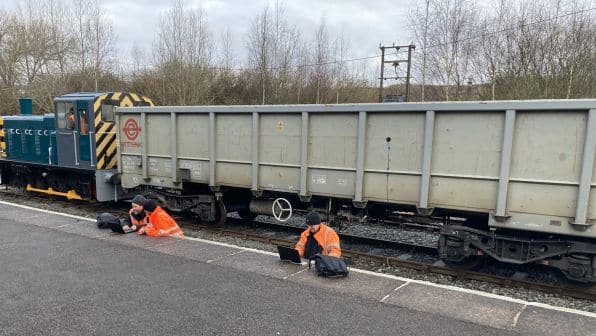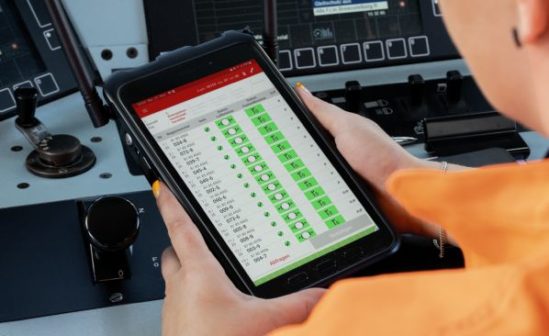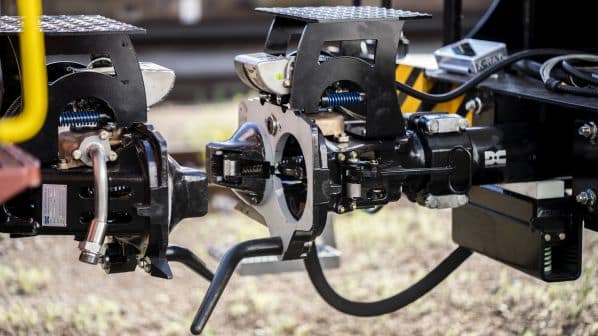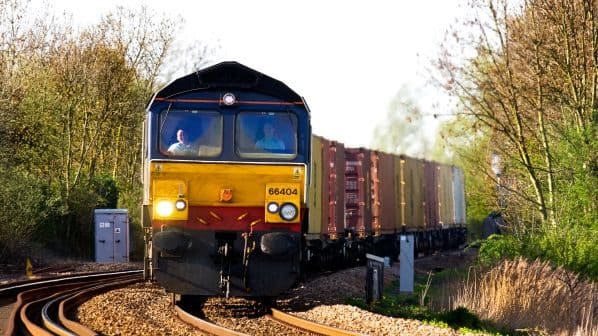BRITISH company Railfreight Consulting has successfully completed proof of concept testing of an Intelligent Wagon (IW) system to provide real-time fault monitoring of freight wagons that alerts the driver or control centre if a fault develops.
Railfreight Consulting reports significant interest from the rail freight sector and is now discussing mainline trials with freight operators, British infrastructure manager Network Rail (NR) and wagon leasing companies.
The IW project has grown out of Railfreight Consulting’s commission from the Rail Safety and Standards Board (RSSB) to examine the business case for fitting the British wagon fleet with the European Union (EU)-supported Digital Automatic Coupler (DAC).
Now under development in mainland Europe, the DAC combines an automatic coupler with air, power and data connections, enabling the transmission of data gathered by wagon-mounted sensors.
Railfreight Consulting says that the firm conclusion from both industry workshops and evaluating the business case was that the British rail freight industry did not require a costly new coupler such as the DAC, but that there are significant advantages in an IW system able to monitor faults and issue reports in real time to the driver or via the internet.
NR provided funding for the proof of concept fitment. This formed part of its work to implement a recommendation made by the Rail Accident Investigation Branch (RAIB) in its report on the derailment of a train carrying hazardous materials near Llangennech in South Wales on August 26 2020.
Around 446,000 litres of petroleum products were spilled when 10 of the train’s 25 tank wagons derailed, causing a major fire and serious local pollution. The derailment was caused by a locked wheelset on one wagon, which RAIB says was probably due to a defect in the braking system.
RAIB recommended that Network Rail, RSSB and the National Freight Safety Group review the technology and systems being used in Britain and other European countries. This was to identify ways of improving the ability to alert a driver, signaller or control room to a wagon defect that may cause a derailment, such as dragging brakes or an axle bearing failure.
Specific consideration was given to wagon equipment capable of detecting a safety-critical fault and transmitting an alarm.
IW system
The IW system is based on a power line running down the train, which also carries communications signals to and from the locomotive cab. Railfreight Consulting says that powering sensors and other wagon equipment from the locomotive is cheaper, more reliable, requires less maintenance and is more suitable for use with hazardous materials than axle-end generators and a Wi-Fi data connection.
The four constituent elements of the core IW infrastructure include the locomotive node, which provides a 48V dc supply from a standard a 5kWh battery, charged by the locomotive’s auxiliary power supply. The locomotive node also provides the data hub for communication with the driver or the internet.
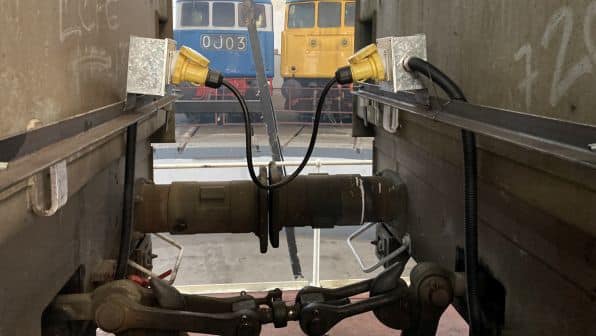
The locomotive and the wagons are connected by jumper cables with three-pin plugs. On each wagon there is a conduit for the power cable running from one end to the other via the wagon node.
The wagon node brings current down to 24V dc to power onboard equipment, with 30W of power available on each wagon. The wagon node also provides the data connection between the power line and monitoring equipment, and is connected to a wagon-mounted coding plug to enable precise identification of the wagon.
Yet to be developed is the means of connecting the locomotive node to the driver advisory system. Railfreight Consulting says that this has not been addressed as it would be specific to each freight operator and each locomotive class or sub-class.
The IW concept has been proven by linking the locomotive node to an externally-mounted lamp on the locomotive to indicate that a wagon fault report has been received in the cab. At the simplest level, the driver could be alerted by two lights in the cab, one indicating that train should come to stand when it can and the other that it should stop immediately.
The core IW infrastructure provides immediate fault reporting on train separation and enables the train consist to be checked automatically. It would also be an enabler for providing train integrity functionality under ETCS Level 3, monitoring train length and whether it remains complete from head to tail.
Following industry consultation, Railfreight Consulting has selected three monitoring applications to demonstrate, including derailment and handbrake status notification. The loading status application can determine if the wagon is full or empty or has been loaded unevenly.
The flexible and scalable configuration of the IW system enables it to meet user-specific requirements for wagon monitoring. Other potential applications include wheel slip/slide management, remote condition monitoring, brake pressure measurement and wagon mileage measurement.
IW could support applications for measuring brake wear and wheel profile, GPS location, ensuring that containers are correctly loaded, and checking that hopper doors are closed. Infrastructure monitoring, rear-facing cameras or radar and automatic brake testing could also be accommodated.
Railfreight Consulting says the cost of installing IW will vary according to the level of monitoring required and fleet size, each wagon type having an individual design and assurance cost. Wagon fitment could be completed within a couple of days, it adds.
The company believes it can offer a typical solution for around £50 per wagon per month, based on a 10-year contract. As the typical wagon leasing charge is £1000 per month and represents around 15% of the total cost of rail freight to the customer, this would add less than 1% to the total cost.
